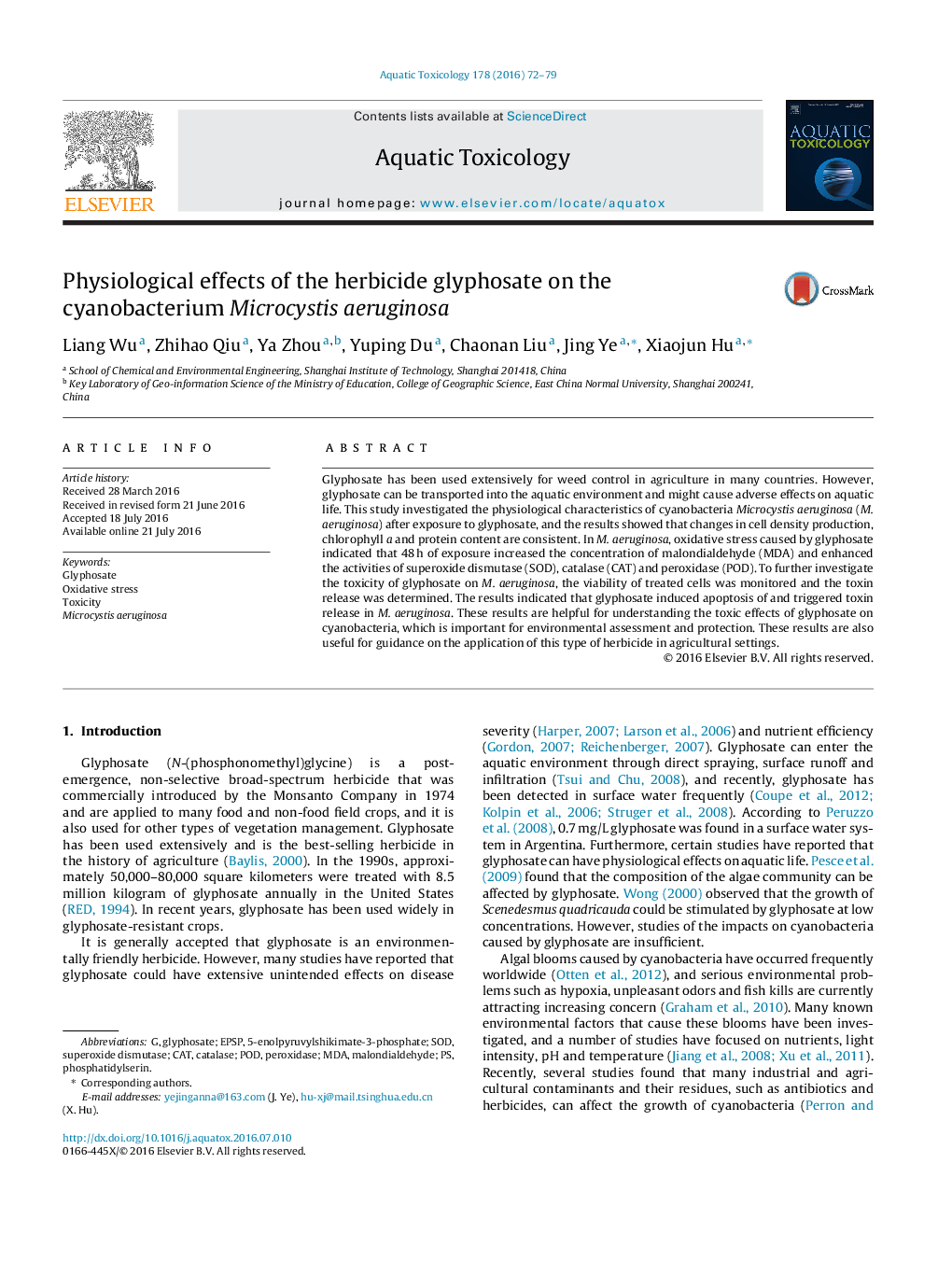| کد مقاله | کد نشریه | سال انتشار | مقاله انگلیسی | نسخه تمام متن |
|---|---|---|---|---|
| 4528910 | 1625927 | 2016 | 8 صفحه PDF | دانلود رایگان |

• First investigation about the physiological effects of glyphosate on cyanobacteria.
• Draw attention to the toxicity of the most widely used herbicide glyphosate.
• Find out the mechanism of glyphosate on the cyanobacteria.
Glyphosate has been used extensively for weed control in agriculture in many countries. However, glyphosate can be transported into the aquatic environment and might cause adverse effects on aquatic life. This study investigated the physiological characteristics of cyanobacteria Microcystis aeruginosa (M. aeruginosa) after exposure to glyphosate, and the results showed that changes in cell density production, chlorophyll a and protein content are consistent. In M. aeruginosa, oxidative stress caused by glyphosate indicated that 48 h of exposure increased the concentration of malondialdehyde (MDA) and enhanced the activities of superoxide dismutase (SOD), catalase (CAT) and peroxidase (POD). To further investigate the toxicity of glyphosate on M. aeruginosa, the viability of treated cells was monitored and the toxin release was determined. The results indicated that glyphosate induced apoptosis of and triggered toxin release in M. aeruginosa. These results are helpful for understanding the toxic effects of glyphosate on cyanobacteria, which is important for environmental assessment and protection. These results are also useful for guidance on the application of this type of herbicide in agricultural settings.
Journal: Aquatic Toxicology - Volume 178, September 2016, Pages 72–79